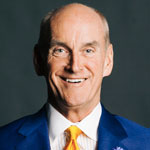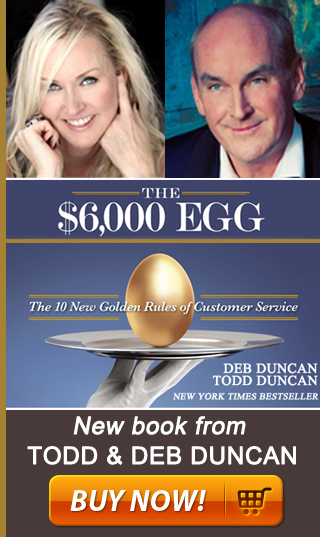Change is the Only Constant |
Mar.1 |

By Todd Duncan
You can always rely on change. Evolving technology and our need for speed and convenience have always motivated entrepreneurs, scientists, inventors, and large companies to scramble to develop the next big gadget. To capture the opportunities that an ever-changing marketplace offers, loan originators need to think in new ways.
In his book, Third Thoughts, professional speaker and author Jim Cathcart asserts that your thinking expands your ability to capture the power of change. In a nutshell, tomorrow is created by today’s thoughts and belief systems. Similarly, in his book, If It Ain’t Broke, Break It, Robert Kriegel calls for a complete overhaul of our traditional thought processes. He advocates that you fix things before the environment mandates that they be fixed.
LIFE IS A PROCESS
Change is a constant in life; therefore, there are no destinations, only journeys. You cannot stand still. Life itself is motion; you are either moving forward and growing or you are falling behind. To fully grasp the concepts in this article, it is important that you recognize and accept this. In fact, welcome change with open arms.
The world is changing rapidly. As Kriegel points out, “ The rules are no sooner established than they become obsolete.” In this rapidly changing world, there is not a lot of time to figure out the new rules every time they change. That is where innovation and creativity come into play. Change and growth can either be designed by you or thrust upon you.
The time to change is when there is little pressure to do so. That is how you make change proactive rather than reactive. That is how you stay ahead of the competition.
SELF-DIRECTED CHANGE
Imagine a curve indicating growth. The upward sweep of the curve depicts a time when you are learning and improving your skills. At some point your growth peaks and you reach a plateau. If you were to remain stagnant in your professional development, you would follow the downward trend of the growth curve, going into a decline. The decline might represent decreased market share, income, enthusiasm, and momentum. If however, you anticipate change and implement it early, the plateau is brief and followed by another upward swing of the growth curve.
This is self-directed change. The growth continues until you reach the next plateau. After some time on that plateau, you improve your skills or change your techniques and grow more until the next plateau. One growth curve leads to the next. The lags in growth or plateaus are periods of investment of time and energy before the effort pays off. There is nothing wrong with plateaus; everyone has them. It is virtually impossible to be growing constantly. The important feature of the self-directed growth curve is that, on average, it continues up over time.
On the other hand, environmentally-directed change is change that is imposed by external factors rather than being initiated by the individual. A person who operates with this M.O. will grow and reach a plateau, but instead of a short lag before further growth, there will be a fear of change. This fear will prevent the investment of time and energy and will prolong the plateau.
The plateau would become a downward trend until the person recognized the need for change. When you change too late, you lose market share and forward momentum. By playing catch-up, you will create a new growth curve, but rarely will you make up what you have lost by not changing early in the game. Your “ lag” is much larger, and costly.
YOU ACHIEVE WHAT YOU BELIEVE
Beliefs play a major role in your ability and willingness to change and achieve. Beliefs are the foundations for possibilities; possibilities lead to actions and actions create results, which foster new beliefs. All success has its roots in change and, as such, is a significant self-esteem booster.
FUEL YOUR PASSION
To capitalize on change you must have a fire in your heart and a sense of passion that propels you forward when others freeze. Selling skills, product knowledge, persistence, drive, education, and goals are some of the many sources of fuel for your fire. You must also be flexible.
Change will be thrust upon you regardless of your acceptance of it, so you might as well accept it and capitalize on it. If you are not adaptable, you will soon lose the race. The drive for success does not happen by spontaneous combustion. You must spark the fire within you.
There is a need for people in our industry to adopt new thinking. While everyone else is swimming with the current, the loan officer of the 21st century swims against it. You have to blaze your own trail. That means initiating new ideas, devising new strategies and casting a creative eye toward everything you do. You will make great strides by developing an enlightened, independent attitude.
When you are on a roll, conventional wisdom dictates that you “ leave well enough alone.” “ If it ain’t broke,” the wise conformists would advise, “ don’t fix it.” Be a nonconformist because when “ it” breaks, it will be too late to fix it.
YOU MUST MESS WITH SUCCESS
The message is clear. You must continually plan ahead and position yourself for the future. Just as products have life cycles — including maturation and extinction — so do services. Loan officers become expendable commodities unless they continually find new ways to differentiate themselves from other people vying for loans.
comments powered by Disqus


 Follow me on Twitter
Follow me on Twitter Like me on Facebook
Like me on Facebook  Connect on LinkedIn
Connect on LinkedIn